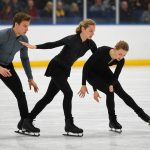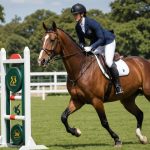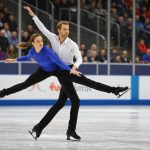Understanding Balance and Poise in Figure Skating
Balance and poise are foundational to the elegance and athleticism required in figure skating. These two elements are integral not only to performing high-level routines but also to ensuring safety and fluidity during performances and competitions. Balance in figure skating involves maintaining stability and control across various movements, which is achieved through a combination of body alignment, muscle strength, and coordination. Meanwhile, poise encompasses the grace and composure a skater exudes while executing complex techniques.
Mastering balance and poise is essential for enhancing overall athleticism. For instance, when a skater remains balanced, it allows for greater precision and fluidity in manoeuvres. Moreover, a well-poised skater can seamlessly transition between moves, captivating the audience with their composure and elegance.
This might interest you : Essential techniques for uk athletes to master stress and beat anxiety
In competitive settings, balance and poise can often be the distinguishing factors that set top skaters apart. With refined skills in these areas, skaters can perform under pressure with calmness and assurance. Developing these abilities involves consistent practice and focuses on core strength, mental fortitude, and technical precision, each of which plays a pivotal role in a skater’s journey to achieving mastery.
Key Techniques for Enhancing Balance
Improving balance in figure skating isn’t just beneficial; it’s essential. Developing specific techniques and exercises can significantly boost a skater’s stability.
Also to see : Essential techniques for uk athletes to master stress and beat anxiety
Core Stability Exercises
Core strength is vital for maintaining balance. Skaters can integrate exercises like planks and Russian twists to bolster their core stability. These movements not only support balance but also enhance muscle strength, which is crucial for complex skating manoeuvres. Embedding these exercises into a regular routine helps skaters remain centred during performances.
Footwork Drills
Precise foot placement and stability are sharpened through focused footwork drills. Repetition of these drills solidifies muscle memory, enabling skating movements to be executed smoothly and instinctively. Exercises such as toe pick jumps or crossovers are particularly effective in developing these skills, creating a foundation for advanced techniques.
Skating Posture
Correct body alignment underpins balance on the ice. Skaters can work on maintaining an upright posture by keeping the head up and shoulders aligned. Implementing visual cues, like focusing on a distant point while practicing, aids skaters in self-checking their posture. By consciously monitoring and adjusting their stance, skaters improve their overall balance and poise.
Building Poise Under Pressure
Achieving poise under pressure requires more than just technical skills. It involves mental strategies that help skaters stay focused and calm during high-stakes performances. These mental techniques are fundamental in nurturing a competitive mindset.
Visualization Techniques
Visualization is a key strategy for enhancing poise. By mentally rehearsing routines, skaters can build confidence and prepare for various scenarios. Creating vivid mental imagery involves imagining oneself performing with precision and grace. This technique is employed by successful skaters who often credit it for reducing anxiety.
Breathing Exercises
Controlled breathing plays a crucial role in maintaining calm under pressure. Specific breathing techniques, such as deep diaphragmatic breaths, help regulate emotions and reduce nervousness. Skaters can practice these techniques both on and off the ice, integrating them into their routine to ensure they are second nature during competitions.
Mindfulness Practices
Incorporating mindfulness helps skaters maintain focus and manage stress. Simple exercises, like body scans or mindful breathing, shift attention to the present moment. This practice not only reduces anxiety but enhances overall performance, making it a vital component of competitive figure skating.
Implementing Techniques into Practice
Training effectively in figure skating requires meticulous planning and dedication. Building a balance and poise oriented practice routine is essential in honing your skills on the ice.
Creating a Balanced Training Plan
Developing an effective training plan that emphasizes balance and poise involves systematic scheduling. Allocate specific time slots in your week for core stability exercises, footwork drills, and mental strategies. For instance, dedicate 30 minutes daily to different balance exercises, keeping variety to improve adaptability and skill diversity. Ensure that each session has a clear focus and purpose, allowing gradual and consistent development over time.
Tracking Progress
To ensure enhancements in your balance and poise, utilise tracking tools such as training diaries or apps. Record specific goals and achievements, noting improvements in stability, posture, and mental resilience. Monitoring these developments will not only motivate you but also provide critical insight into areas requiring further attention.
Building a Support Network
A supportive environment is crucial. Engage actively with coaches and peers to receive constructive feedback on your performance. Encourage dialogue and exchange tips on mastering figure skating fundamentals. This collaborative setting not only facilitates learning but fosters a motivating and positive atmosphere ensuring everyone feels empowered in their skating journey.
Expert Insights and Experiences
Gleaning knowledge from skater interviews and professionals in the field provides a wealth of practical tips and deep insights. Interviews with experienced skaters reveal that balance and poise are skills honed over time, often requiring perseverance and dedicated practice. Skaters frequently share anecdotes illustrating how they overcame challenges during competitions, such as dealing with unexpected conditions on the ice or maintaining composure during tense moments. Their advice to newcomers often includes staying persistent, focusing on core techniques, and gradually building up your figure skating fundamentals.
Coaches offer a unique perspective on a skater’s balance and poise. They often emphasize the relationship between correct body alignment and performance. Many elite programs develop specific training philosophies tailored to individual skaters’ needs, highlighting common mistakes to avoid. For instance, neglecting mental strategies or overlooking proper posture can hinder progress.
Additionally, video tutorials serve as valuable tools for skaters of all levels. These resources typically include detailed breakdowns of key techniques aimed at enhancing balance and poise. By consistently utilizing such videos, skaters can emulate successful moves and improve their skill set effectively.











